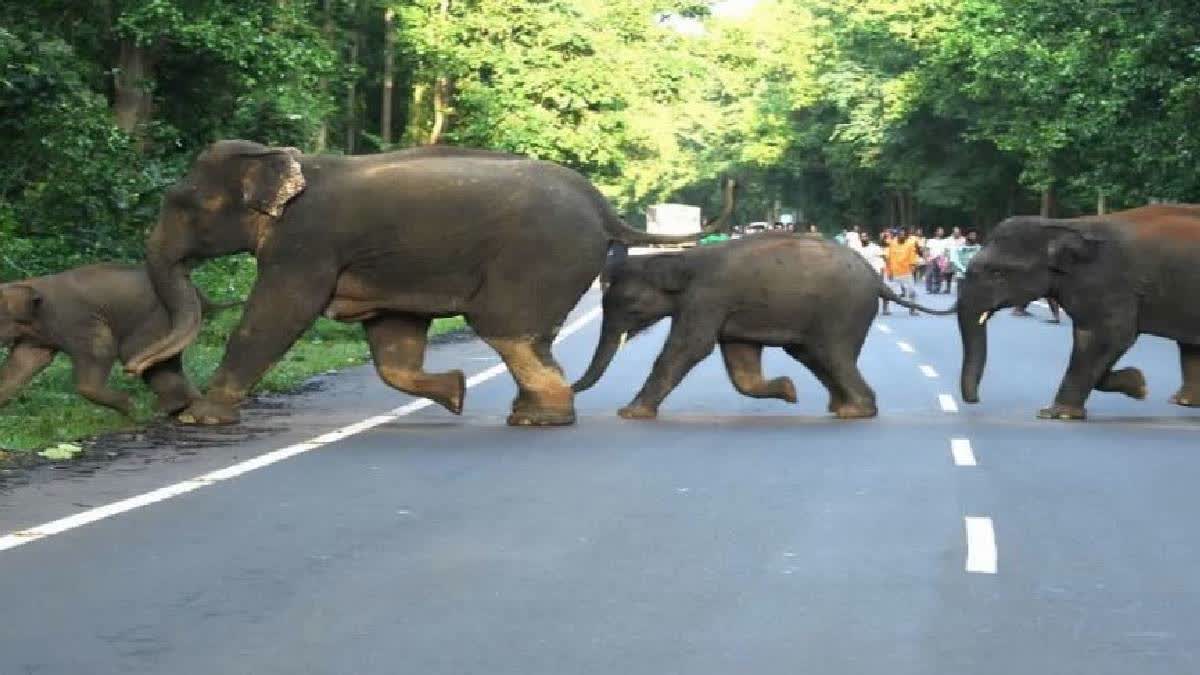Chittoor/Tirupati:The forests of Andhra Pradesh's Chittoor district have turned into a battleground for two elephant herds, competing for food, water and dominance, thereby creating a crisis for nearby villagers. Depleting resources in the forests and lack of habitat have driven elephants into human settlements, resulting in significant damage to crops, property and lives, forest officials said.
A tragedy occurred on Saturday midnight when a herd of elephants trampled Kandulavaripally sub-sarpanch and TDP leader, Rakesh Choudhary, to death. This incident sparked a wave of fear among the locals, who are now urging forest officials and the state government to take urgent action to mitigate the issue.
Story behind conflict
Initially, a herd of 10 to 12 elephants migrated from Tamil Nadu to the Seshachalam forests via Palamaneru, settling in areas close to the Kaundinya Wildlife Sanctuary. Over time, another group of 15 elephants entered the region from neighboring states, further straining the forest's resources.
These two groups, now numbering around 20 and 15 elephants respectively, frequently clash over habitat and space. When they encounter each other in the forests, some elephants tend to flee towards the nearby villages, damaging farmlands and crops along with attacking residents.
Deadly consequences
Since 2011, elephant attacks have claimed 22 lives in Chittoor and left several others injured. The cumulative crop loss in the region has been immense, with an estimated 233 acres of farmland damaged between 2015 and 2024.
Compensation and assistance
The government has responded by offering compensation to the victims' families and affected farmers. From 2018 to 2024, families of the deceased received Rs 10 lakh each as compensation, while a total of Rs 76.321 lakh was allocated for crop losses. However, only Rs 56 lakh was distributed until 2022, leaving many farmers dissatisfied.
Limited use of trained elephants
One of the primary criticisms directed at the forest department is its failure to effectively utilise the Kunki elephants trained for such situations. Elephants like Vinayak, Jayant, Ganesh, Venkanna, and Balaji, stationed at the Tirupati Zoo, are trained to manage wild herds but have reportedly been underutilised.
Nagabhushanam, Sub-DFO of Tirupati division, acknowledged the rising incidents of elephant attacks and said that a report on the recent developments and proposed protective measures is being prepared, which will be submitted to the government.
Villagers seek permanent solutions
The villagers in affected areas, including Kuppam, Palamaneru, and Punganur, are desperate for a long-term solution. The current measures are proving insufficient, as the human-elephant conflicts continue to escalate, villagers complained.
Proactive solutions suggested by farmers:
- Expanding forest cover and water sources to reduce the elephants’ migration into villages.
- Strengthening fences around vulnerable areas.
- Increasing deployment of trained elephants for conflict mitigation.
Read More:
- Tribal Man Killed In Elephant Attack In Kerala’s Nilambur Forest
- Elephantine Dilemma: Rising Numbers Of Gentle Giants Amid Shrinking Forests In Assam
